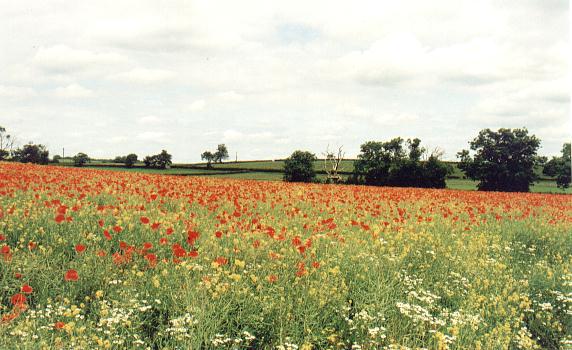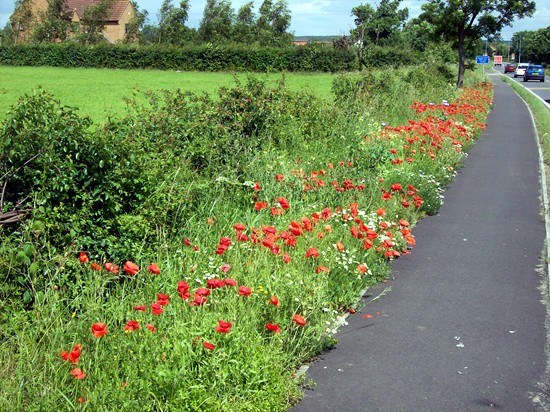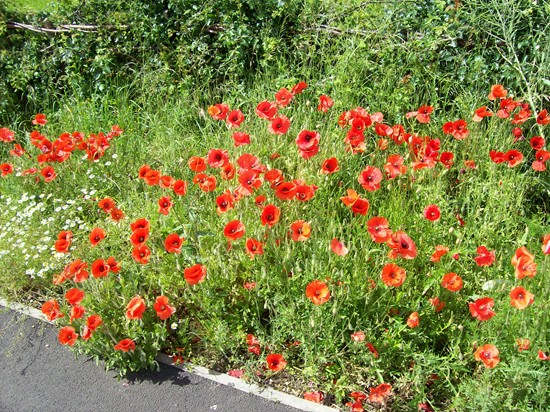|
Poppies

New housing
development is encroaching on the countryside around Bourne much to the chagrin of residents who are regularly seeing trees and meadows replaced by residential estates. One of the biggest projects in recent years
has been at the far end of Mill Drove where house building created a new estate towards the end of the 20th century. But nature clung to the site as though reluctant to let the land go and poppies colonised patches between the foundations of these new properties until exterminated by weed killers.
More poppies flourished as the Elsea Park development got underway to the south of Bourne because they are a determined plant, anxious to show their beauty whenever possible.
Poppies have long been the scourge of farmers and they are kept under control annually by the liberal use of agro-chemicals but the seeds are difficult to destroy and they lie dormant for decades and germinate when conditions are more favourable. They have become a common sight where the earth has been disturbed and they proliferated after the digging of trenches in the fields of Flanders during the First World War which is why the poppy has become a symbol of the conflict and is worn on the anniversary of the armistice every November in remembrance of those who died.
We now see them where the soil has been turned alongside new road and river developments and on building sites where they bring a glorious splash of colour to a dull and drab location although their life span is invariably a short one.
The common poppy (Papavar rhoeas) is an annual with four overlapping petals and nodding buds and can be seen in flower from June until August. They were once thought to cause thunderstorms but they were also used to treat headaches and although slightly poisonous with a peculiar and heavy odour, the red poppy does not, as is popularly thought, contain the narcotic of the opium poppy
(Papaver somniferum).
When the petals have withered and fallen, tiny holes open up just below the flat top of the cup-shaped poppy head and when the breeze blows and shakes it, seeds are sprinkled out like pepper from a pepper pot and they land on the soil ready to germinate another year. The petals can be collected to make a syrup and in some parts of Europe the poppy is cultivated for the sake of its seeds which are used in cakes and for the production of an oil which is used as a substitute for olive oil. Attempts have also been made to utilise the brilliant red of the petals as a dye but experiments have failed to capture the colour for such use.
The fields were full of poppies during the early years of this century and perhaps these potent images of childhood are one of the reasons why we pursue them today, seeking them out for a nostalgic glimpse to remind us of the countryside of yesteryear when wild flowers were everywhere and if you missed seeing one species one year, you could be sure they would be back the next. Not so today when most of our flora is under threat but the poppy retreats stubbornly. Our affection for this flower defies reason, but then so do many of the memories that we cling to as the years pass.
|
PHOTO ALBUM |
 |
Poppies growing
amid a crop of oil seed at Toft, near Bourne. |
|
 |
|
Poppies that have colonised the roadside verge after
construction work to create a new footpath alongside the A15 between
Bourne and Morton village. |
|
 |
See also
Country
Diary for 21st June 2007 Opium
use in earlier times

Go to:
Main Index Villages
Index
|



